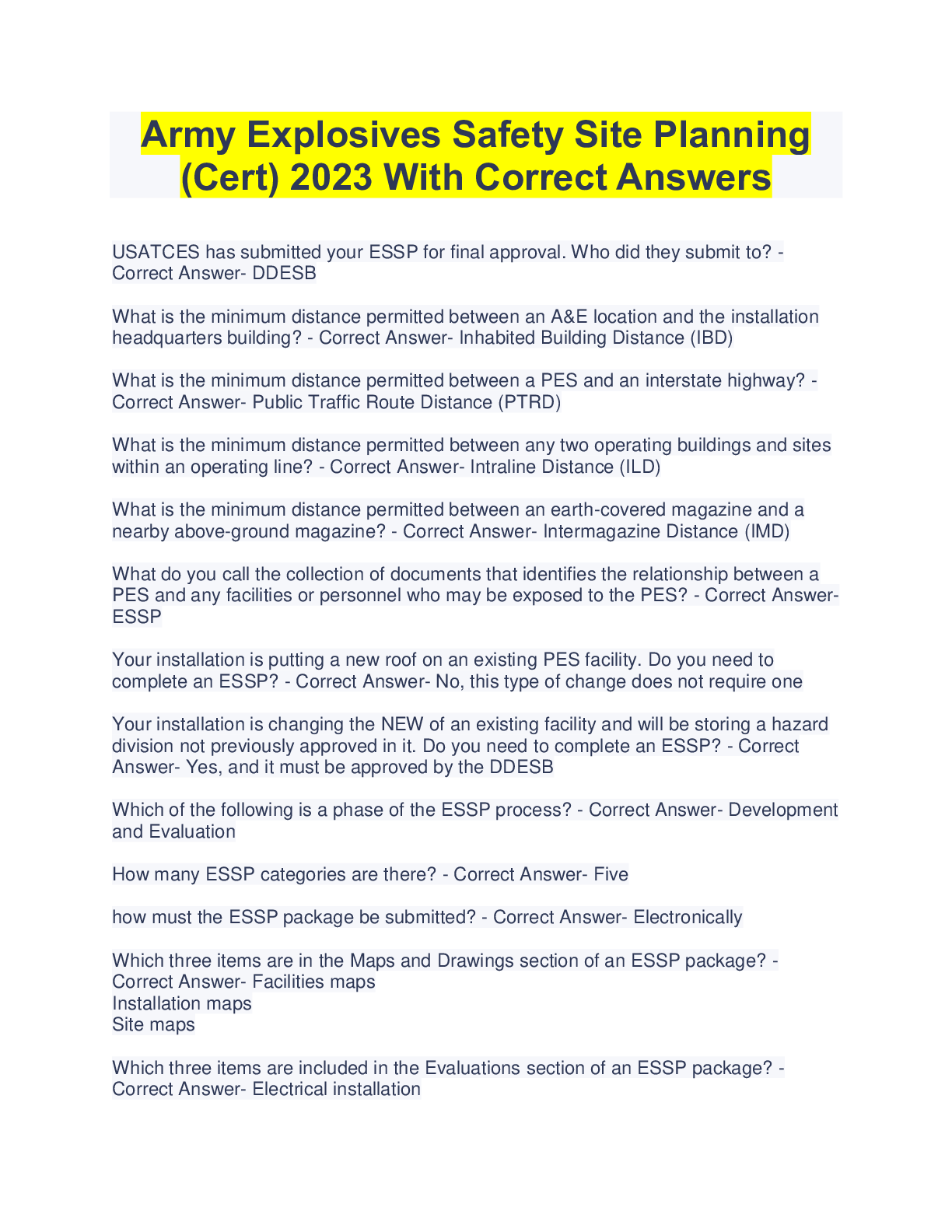*NURSING > QUESTIONS & ANSWERS > MEDSURG FINAL EXAM PRACTICE TESTS 2023 WITH CORRECT ANSWERS (All)
MEDSURG FINAL EXAM PRACTICE TESTS 2023 WITH CORRECT ANSWERS
Document Content and Description Below
MEDSURG FINAL EXAM PRACTICE TESTS 2023 WITH CORRECT ANSWERS The nurse is admitting a patient with the diagnosis of advanced renal carcinoma. Based upon this diagnosis, the nurse will expect to fin... d which of the following as the "classic triad" of presenting symptoms occurring in patients with renal cancer? A. Fever, chills, flank pain B. Hematuria, flank pain, palpable mass C. Hematuria, proteinuria, palpable mass D. Flank pain, palpable abdominal mass, and proteinuria B. Hematuria, flank pain, palpable mass Which of the following nursing interventions is appropriate in providing care for an adult patient with newly diagnosed adult onset polycystic kidney disease (PKD)? A. Help the patient cope with the rapid progression of the disease. B. Suggest genetic counseling resources for the children of the patient. C. Expect the patient to have polyuria and poor concentration ability of the kidneys. D. Implement appropriate measures for the patient's deafness and blindness in addition to the renal problems. B. Suggest genetic counseling resources for the children of the patient. An elderly male patient visits his primary care provider because of burning on urination and production of urine that he describes as "foul smelling." The health care provider should assess the patient for which of the following factors that may dispose him to urinary tract infections (UTIs)? A. High-purine diet B. Sedentary lifestyle C. Benign prostatic hyperplasia (BPH) D. Recent use of broad-spectrum antibiotics C. Benign prostatic hyperplasia (BPH) The nurse is providing care for a patient who has been admitted to the hospital for the treatment of nephrotic syndrome. Which of the following is a priority nursing assessment in the care of this patient? A. Assessment of pain and level of consciousness B. Assessment of serum calcium and phosphorus levels C. Blood pressure and assessment for orthostatic hypotension D. Daily weights and measurement of the patient's abdominal girth D. Daily weights and measurement of the patient's abdominal girth Which of the following nursing diagnoses is a priority in the care of a patient with renal calculi? A. Acute pain B. Deficient fluid volume C. Risk for constipation D. Risk for powerlessness A. Acute pain Eight months after the delivery of her first child, a 31-year-old woman has sought care because of occasional incontinence that she experiences when sneezing or laughing. Which of the following measures should the nurse first recommend in an attempt to resolve the woman's incontinence? A. Kegel exercises B. Use of adult incontinence pads C. Intermittent self-catheterization D. Dietary changes including fluid restriction A. Kegel exercise The nurse preparing to administer a dose of PhosLo to a patient with chronic kidney disease would interpret that this medication should have a beneficial effect on which of the following laboratory values of the patient? A. Sodium B. Potassium C. Magnesium D. Phosphorus D. Phosphorus When caring for a patient during the oliguric phase of acute kidney injury, which of the following would be an appropriate nursing intervention? A. Weigh patient three times weekly. B. Increase dietary sodium and potassium. C. Provide a low-protein, high-carbohydrate diet. D. Restrict fluids according to previous daily loss. D. Restrict fluids according to previous daily loss. Which of the following statements by the nurse regarding continuous ambulatory peritoneal dialysis (CAPD) would be of highest priority when teaching a patient new to this procedure? A. "It is essential that you maintain aseptic technique to prevent peritonitis." B. "You will be allowed a more liberal protein diet once you complete CAPD." C. "It is important for you to maintain a daily written record of blood pressure and weight." D. "You will need to continue regular medical and nursing follow-up visits while performing CAPD." A. "It is essential that you maintain aseptic technique to prevent peritonitis." A patient with a history of end-stage renal disease secondary to diabetes mellitus has presented to the outpatient dialysis unit for his scheduled hemodialysis. Which of the following assessments should the nurse prioritize before, during, and after his treatment? A. Level of consciousness B. Blood pressure and fluid balance C. Temperature, heart rate, and blood pressure D. Assessment for signs and symptoms of infection B. Blood pressure and fluid balance A patient is recovering in the intensive care unit (ICU) after receiving a kidney transplant approximately 24 hours ago. Which of the following is an expected assessment finding for this patient during this early stage of recovery? A. Hypokalemia B. Hyponatremia C. Large urine output D. Leukocytosis with cloudy urine output C. Large urine output [Show More]
Last updated: 1 year ago
Preview 1 out of 13 pages
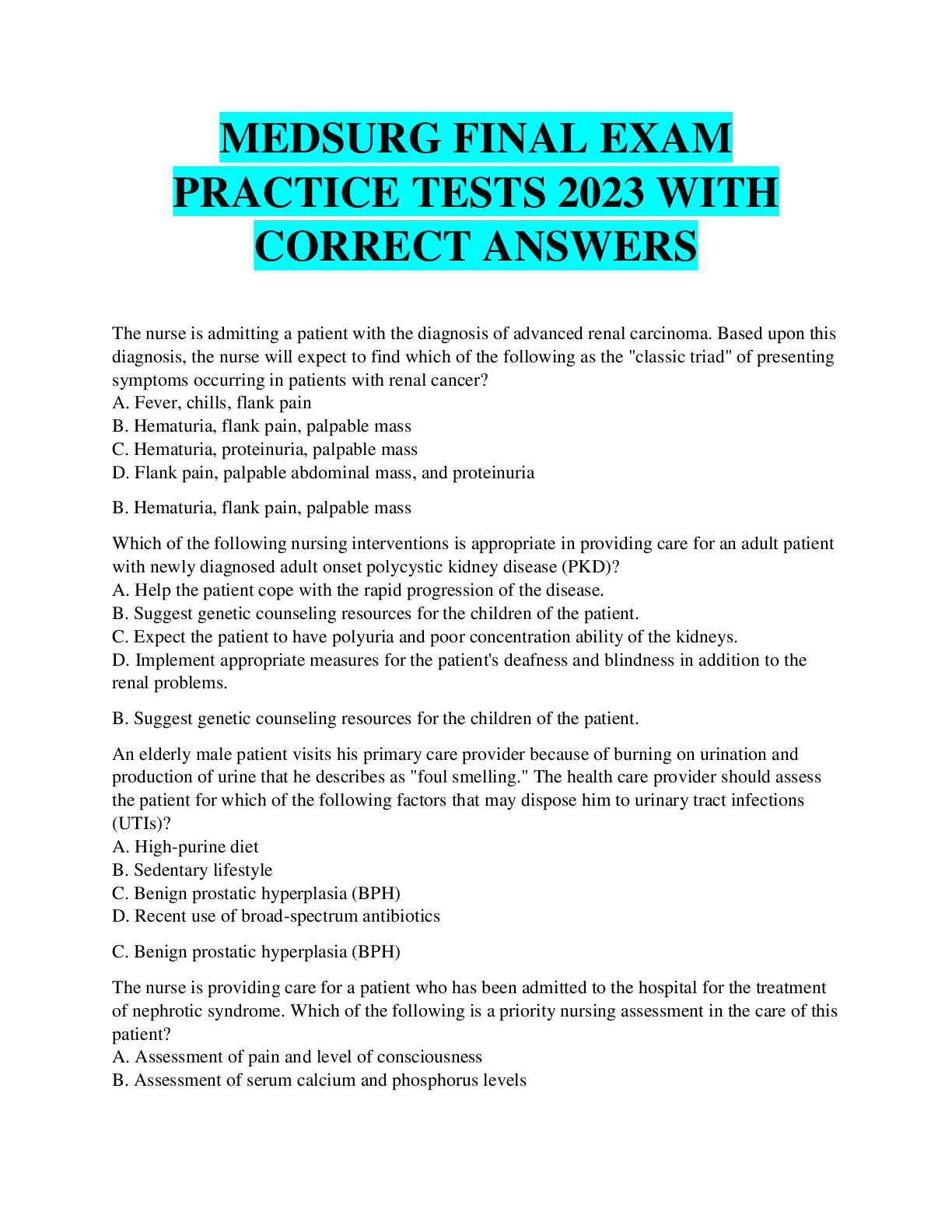
Buy this document to get the full access instantly
Instant Download Access after purchase
Add to cartInstant download
We Accept:

Reviews( 0 )
$7.50
Document information
Connected school, study & course
About the document
Uploaded On
Dec 12, 2022
Number of pages
13
Written in
Additional information
This document has been written for:
Uploaded
Dec 12, 2022
Downloads
0
Views
143


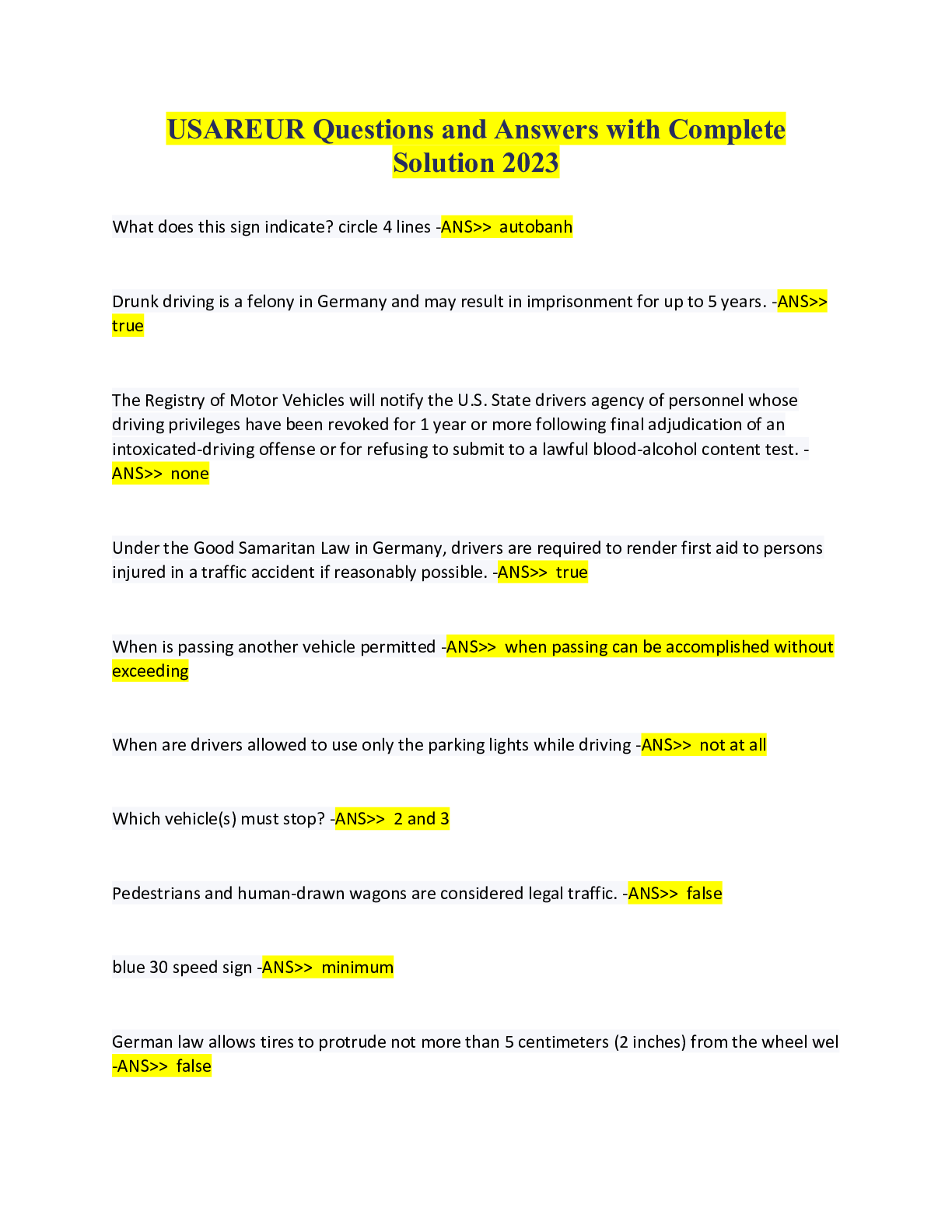

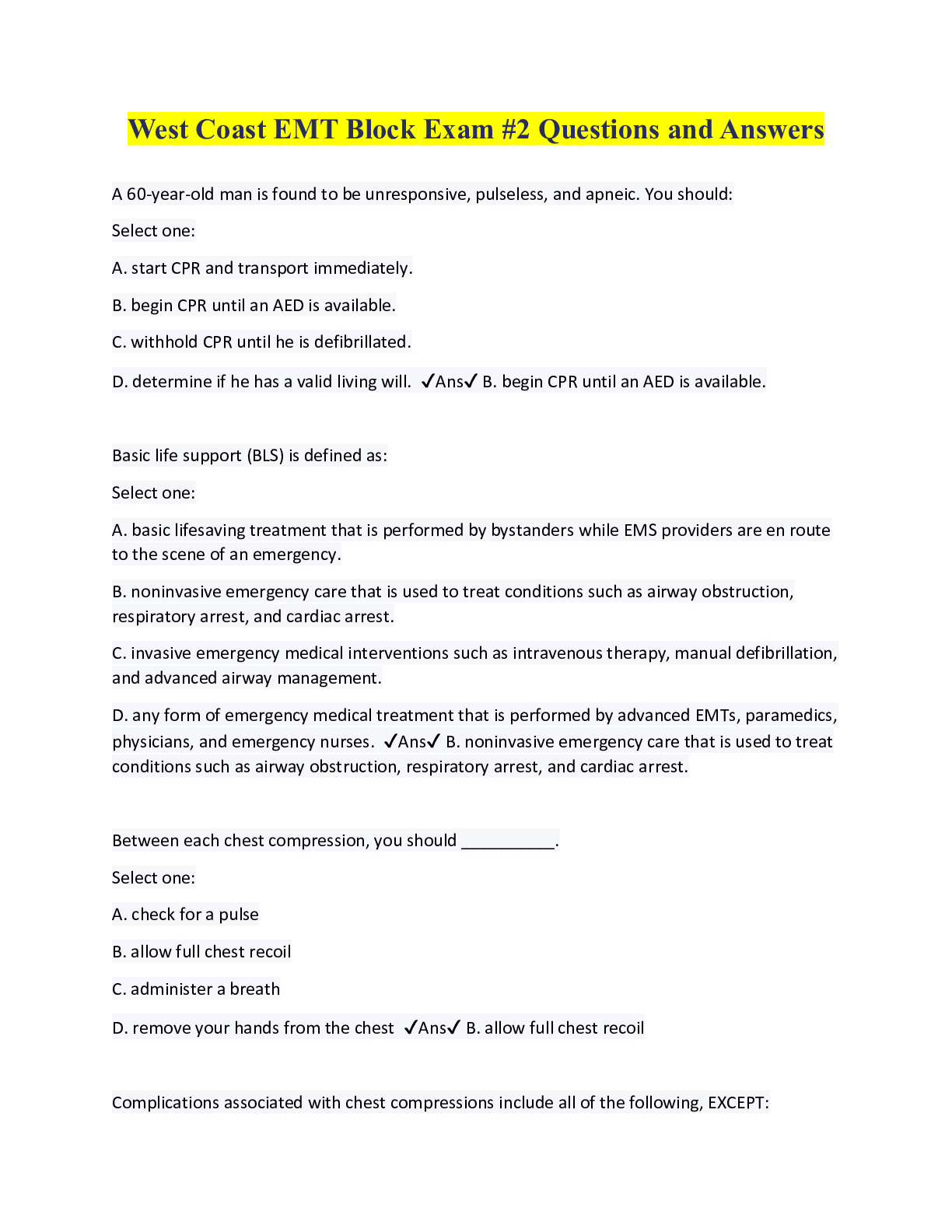
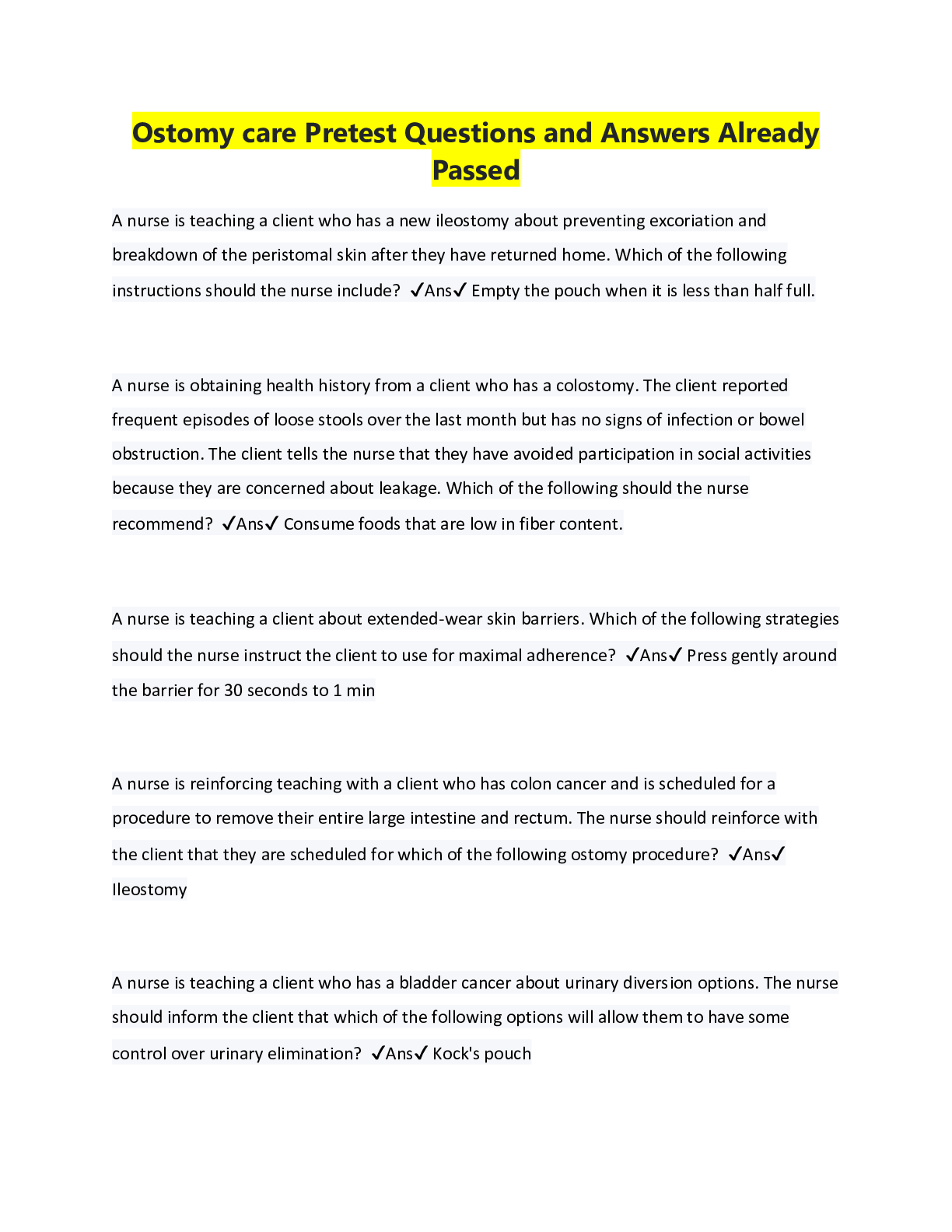
.png)
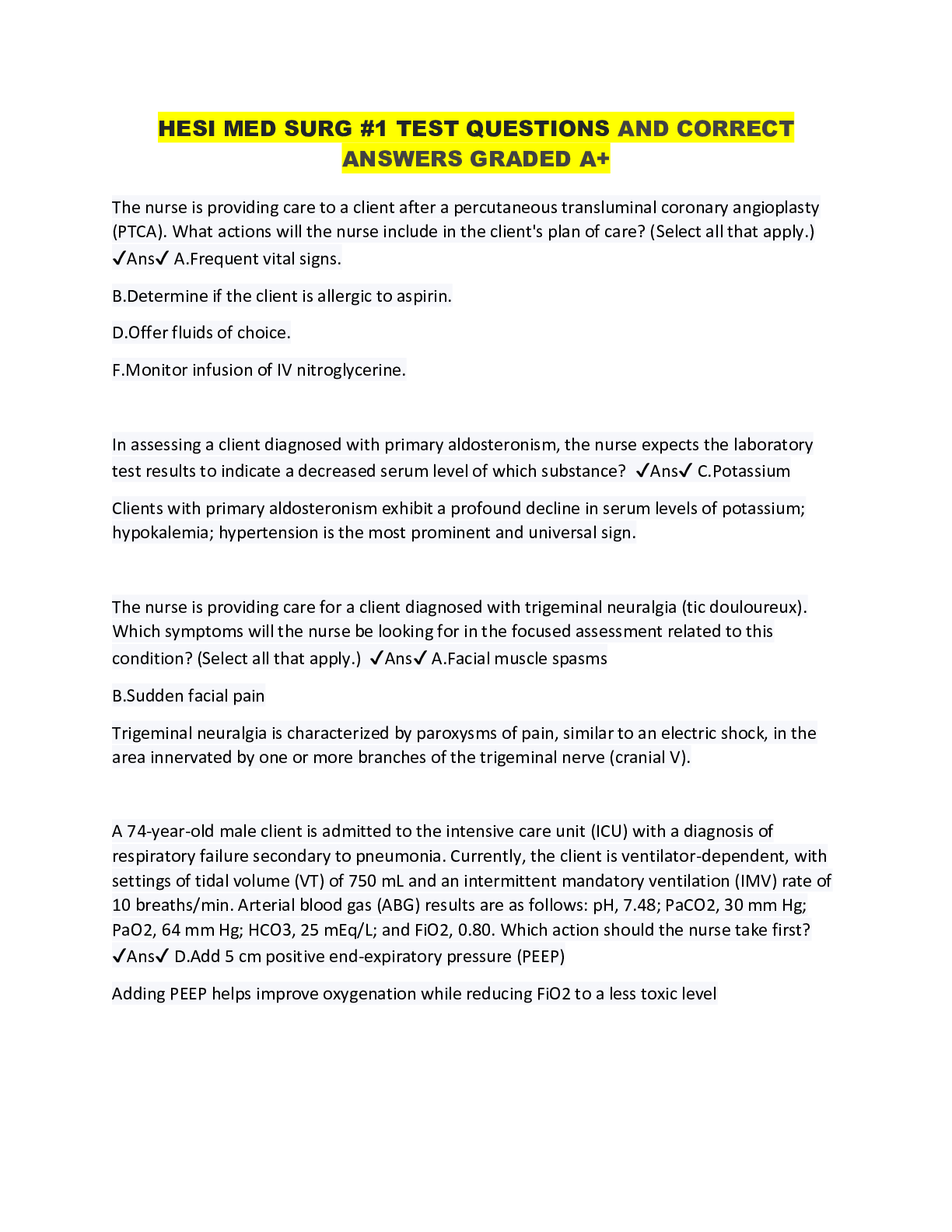


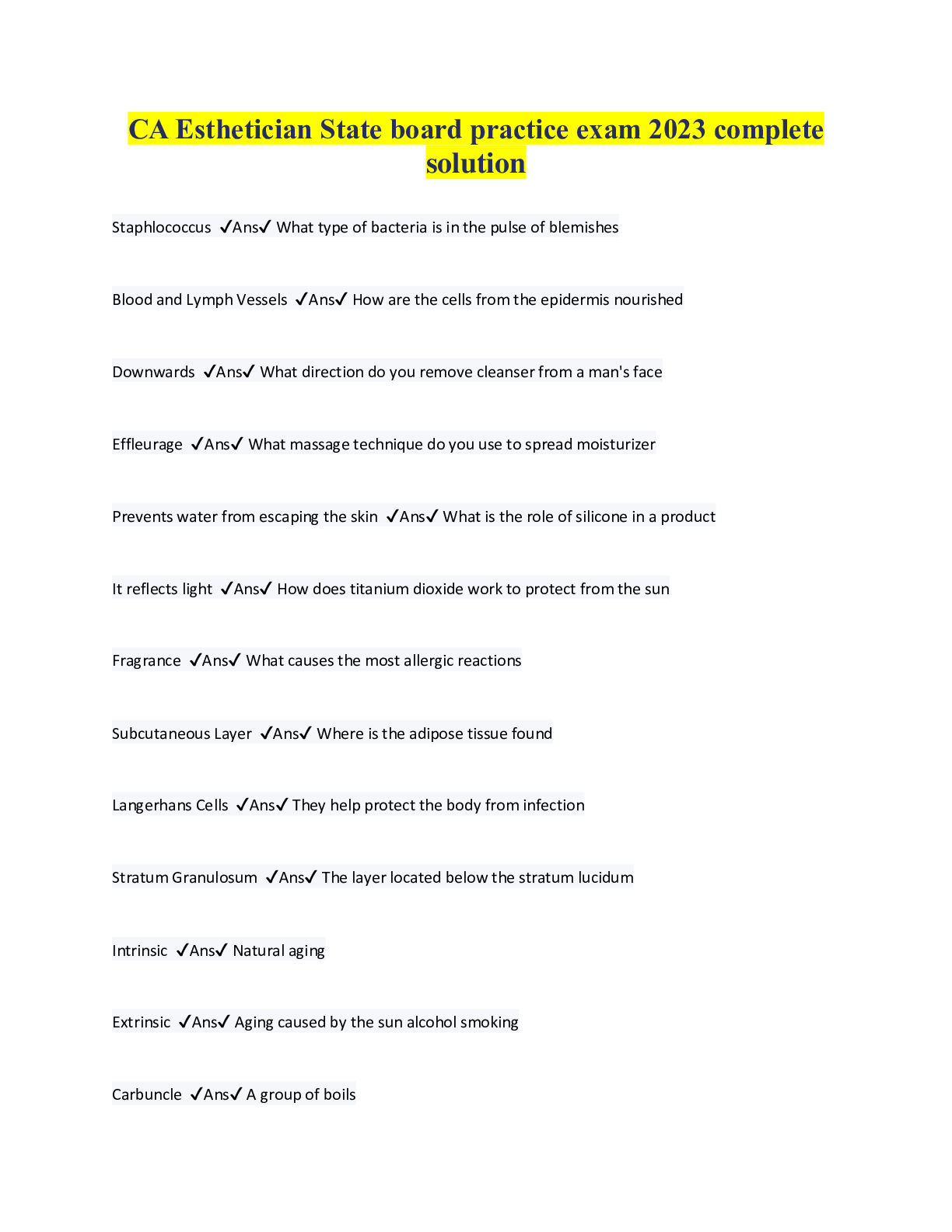
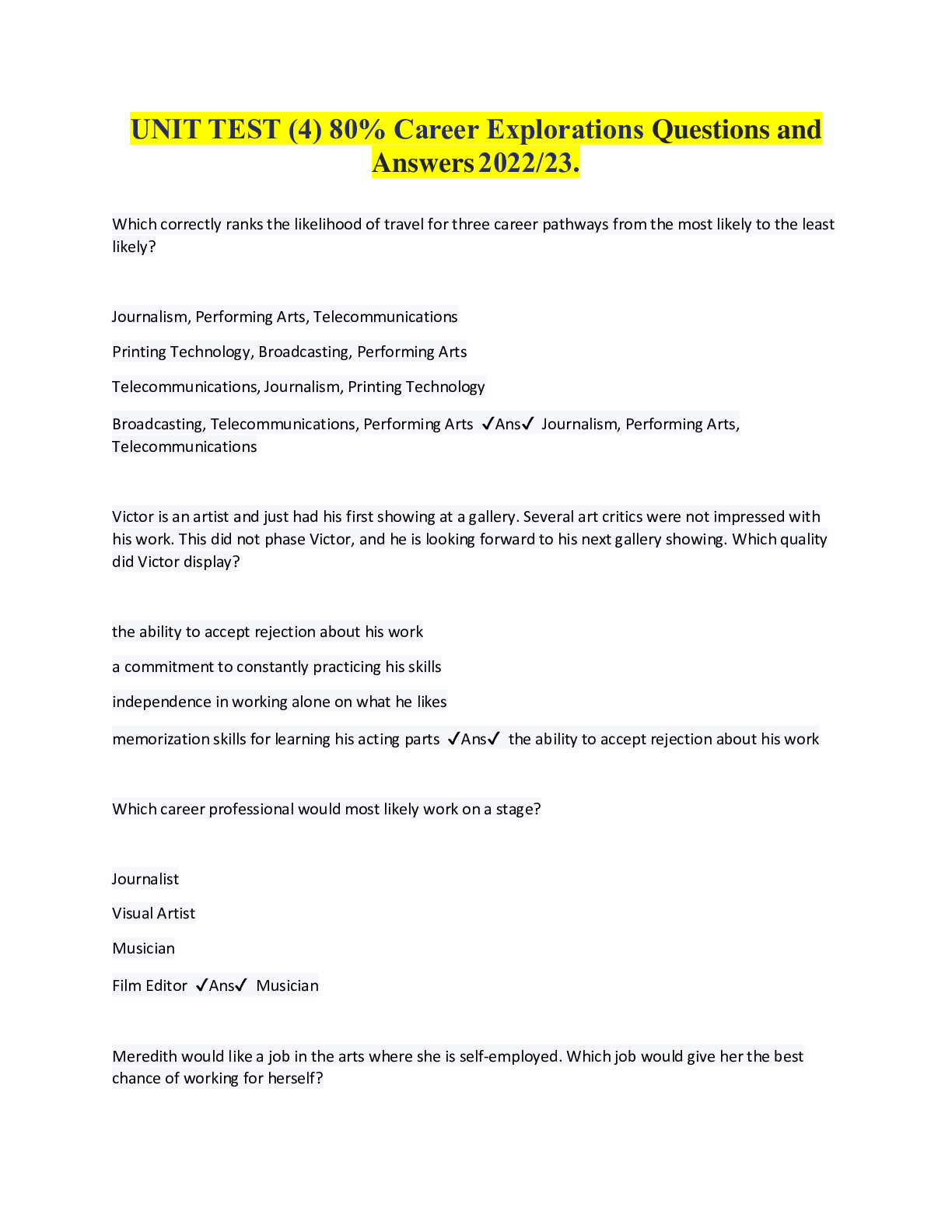
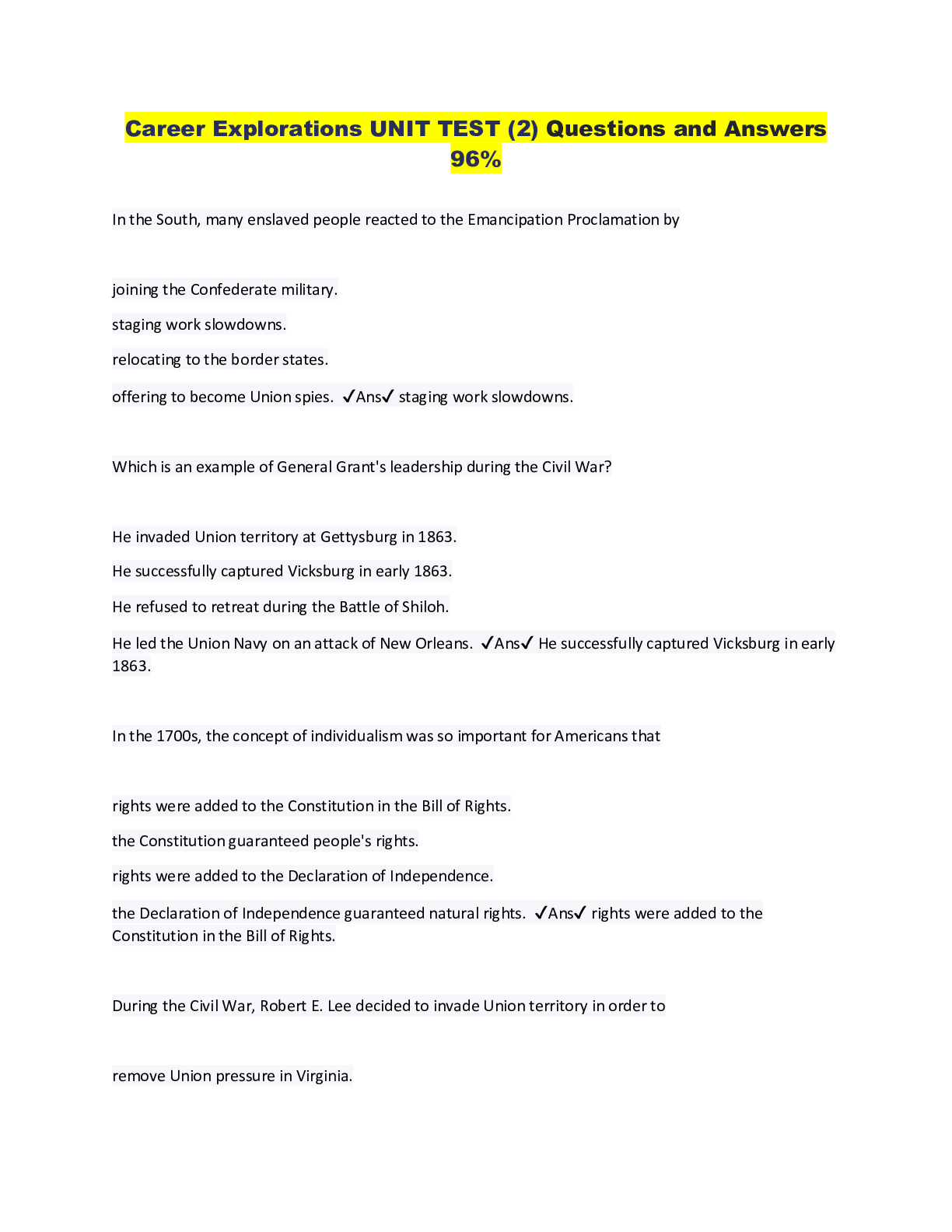


.png)

.png)

